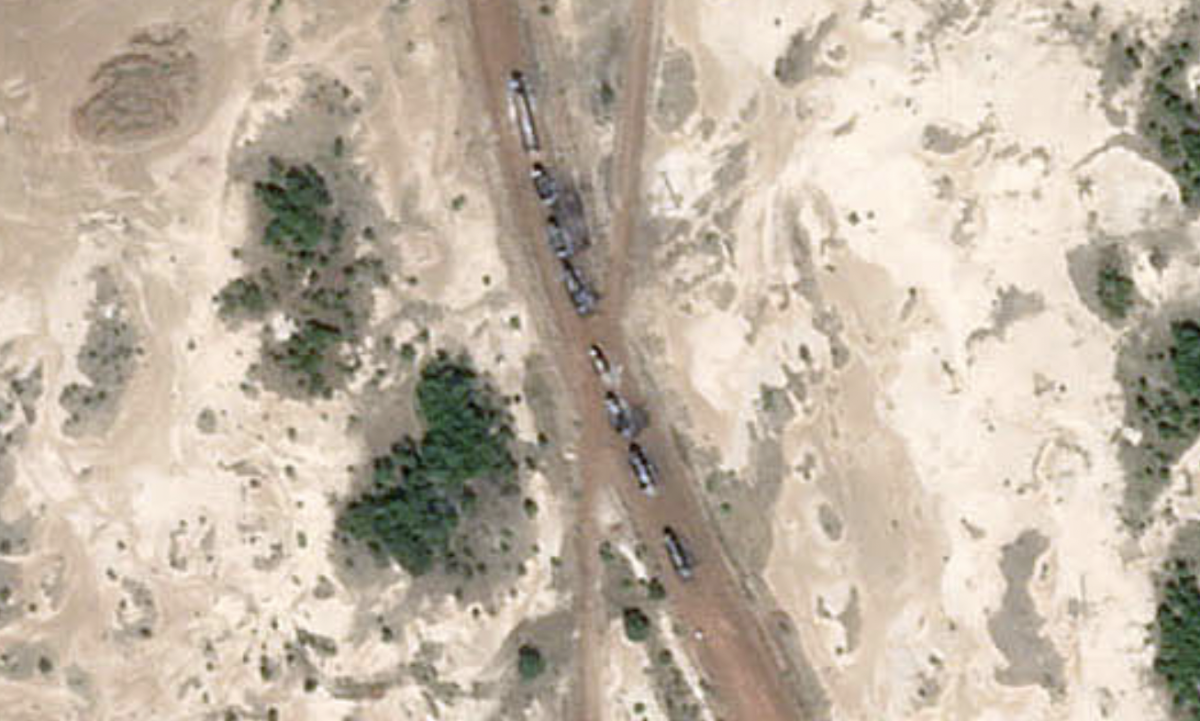Barsalogho Massacre: How Defensive Trenches Became a Mass Grave
WARNING: This report contains references to killings and graphic violence that some readers might find distressing.
Videos circulating online show the moment militants killed more than 100 unarmed residents digging defensive trenches in Barsalogho, Burkina Faso, last month.
Footage shows those killed lying in trenches dug to protect their town.
Satellite images also reveal that extensive new trenches were dug around Barsalogho immediately after the massacre.
According to Collectif Justice Pour Barsalogho (CJB), a collective formed by residents in the aftermath of the attack, civilians were forced by the Burkinabè army to dig the trenches on Saturday morning, August 24, when they came under attack from Al Qaeda-affiliated Jama’at Nasr al-Islam wal-Muslimin (JNIM). Bellingcat was not able to independently verify this claim.
The CJB described the army’s inability to prevent the massacre as a “bitter failure.”
The videos filmed by JNIM show militants shooting at unarmed people, and dozens of bodies scattered along the trenches.
JNIM claimed it killed 300 people affiliated with the Burkinabè military. The exact number of people killed and wounded has still not been confirmed by the government, with early reports suggesting hundreds were killed.
Military officials met with some victims in nearby Kaya after the attack, but neither the government nor the military has been forthcoming about events. More than a week after the massacre, the country’s president Ibrahim Traoré, has yet to release an official statement about the attack, although the Presidential Office released a report on Wednesday outlining that Malian and Nigérien officials had expressed solidarity with the victims.
Bellingcat geolocated footage filmed by JNIM militants during the attack and analysed satellite imagery showing the growth of the trenches around the town.

Motorcycles Approach
On the morning of Saturday August 24, armed men on motorcycles approached the outskirts of Barsalogho, where scores of people were digging defensive trenches.
Bellingcat obtained and geolocated four videos that all appear to have been filmed by the same JNIM militant: one showing them approaching the trenches, one upon arrival at the trenches, and another two showing executions and dead bodies in the trenches.
Bellingcat found that a fifth video circulated online, allegedly showing the aftermath of the attack, was actually filmed in Melgué, Mali, where JNIM fighters are also present.
A sixth video circulated online shows several men digging trenches, but we have so far been unable to verify its location or time.
The first video reveals the beginning of the JNIM attack, showing more than twenty motorcycles charging towards the trenches. Bellingcat geolocated this footage to the east of Barsalogho, roughly following the road from Nyanga. As they approach, some militants dismount from the motorbikes to follow on foot. The militants are heavily armed, and machine-gun fire can be heard throughout the video.
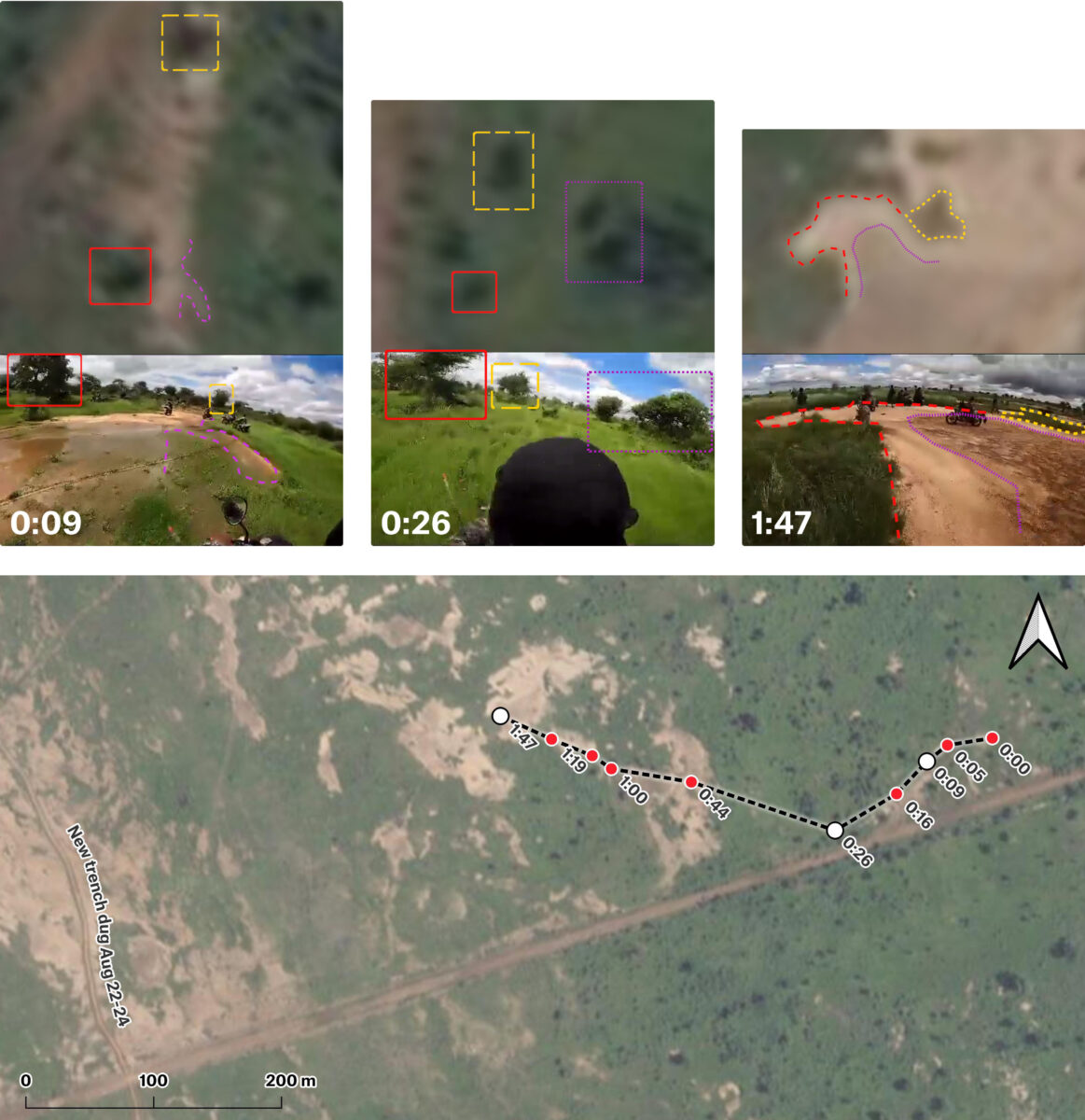
New Fortifications around the Town
In late 2022, satellite imagery shows the construction of trenches around the western outskirts of Barsalogho. By 2023, the fortifications had expanded into more extensive trenches circling around the northwest side of the town, as highlighted by New York Times investigator and former Bellingcat researcher, Christiaan Triebert.
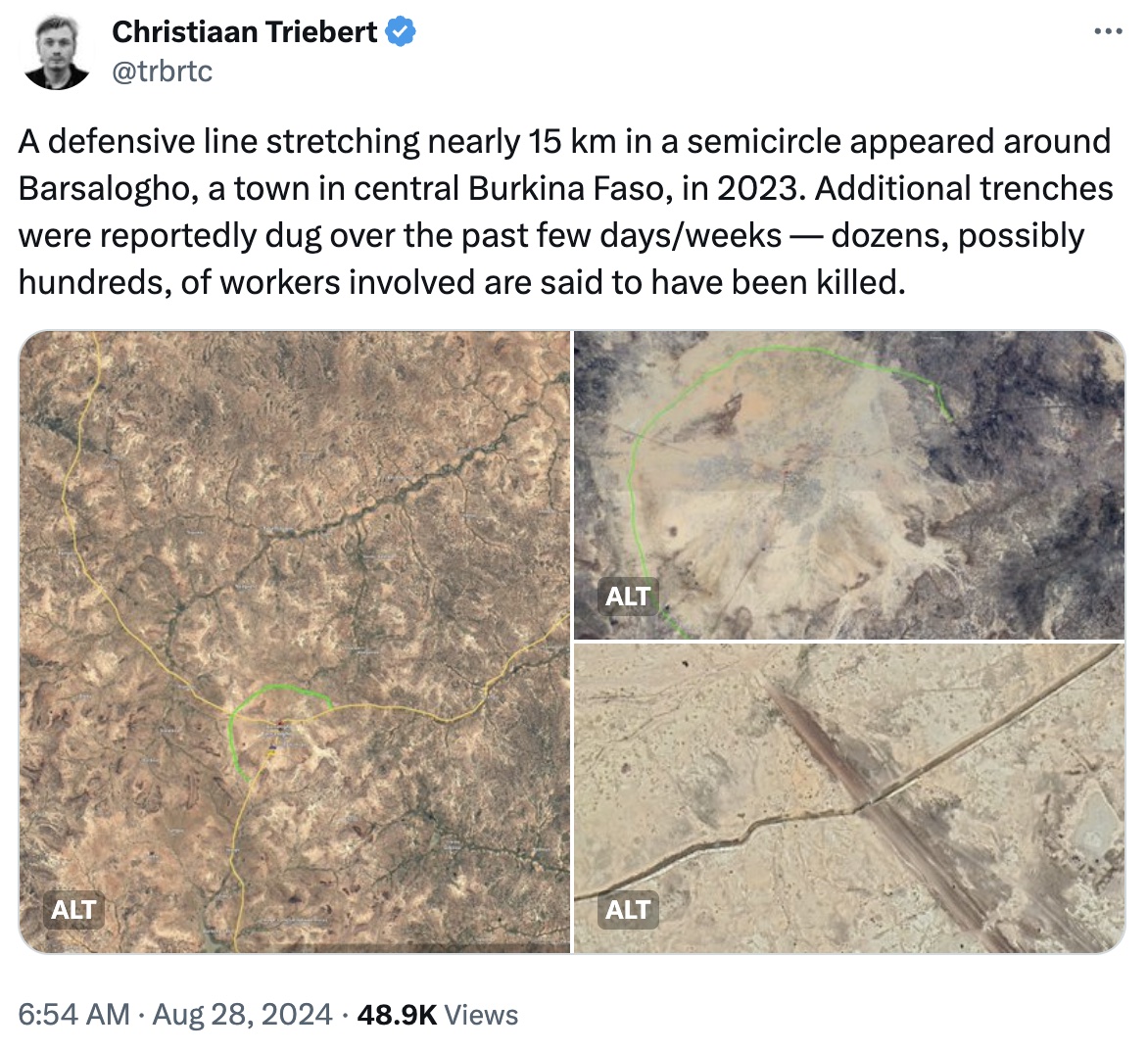
High-resolution Airbus satellite imagery from March 17, 2024, available in Google Earth Pro, shows this trench line. On August 22, 2024, low-resolution PlanetScope satellite imagery from Planet Labs PBC shows construction work in progress on the trench line to the east of Barsalogho, near the road towards the town of Nyanga.
Synthetic Aperture Radar (SAR) satellite imagery tasked by Bellingcat and captured by Umbra Space on the evening of August 28 shows two new trenches — one in the west and one in the east, near where Bellingcat geolocated the attack and its aftermath.
The full-resolution SAR image (2.2 GB) is available for research use here under a CC-BY 4.0 licence with attribution to Umbra Space.
PlanetScope imagery shows that the western trench was constructed between August 6 and August 18 of this year, and the eastern trench was constructed between August 22 and August 24, when the attack took place.
After the attack, 3.75 kilometres (km) of new trenches were constructed, based on analysis of a Planet Labs PBC SkySat image captured on the morning of September 2.
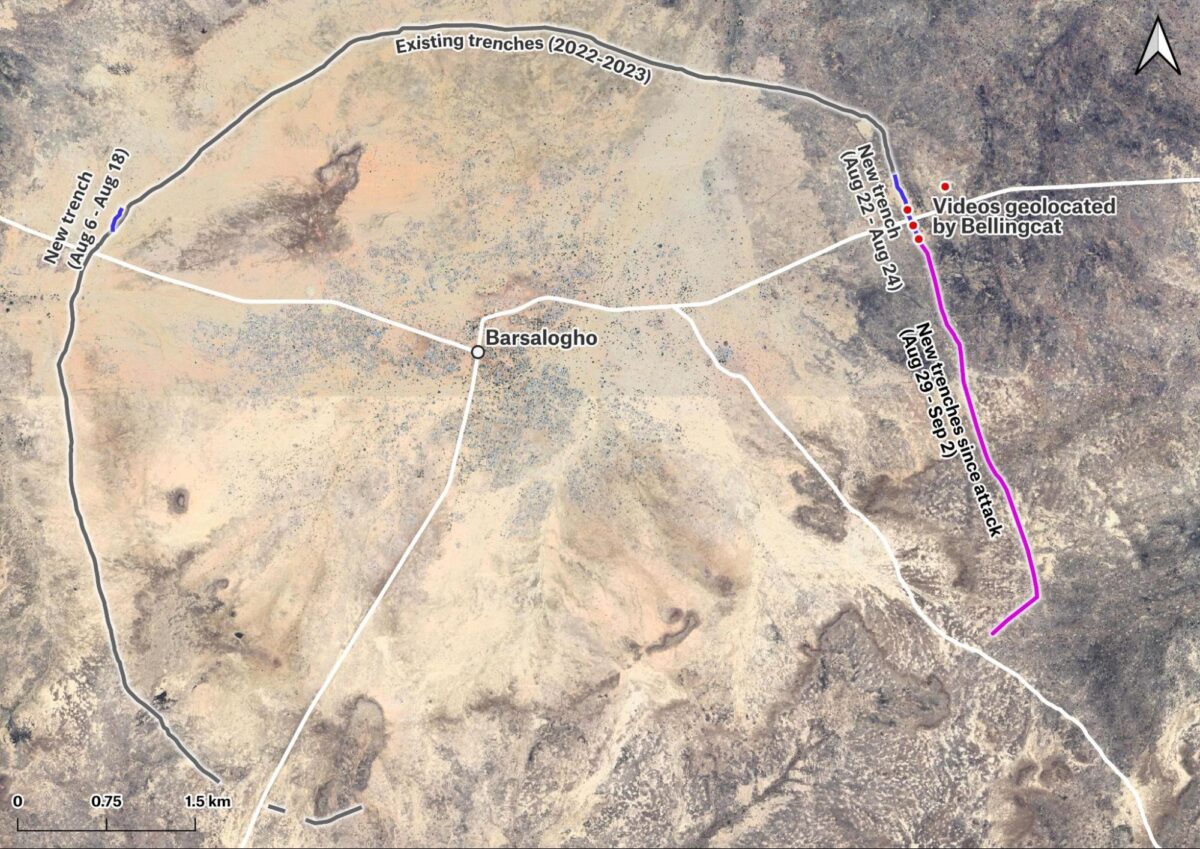
Footage Reveals More Details about the Attack
One of the JNIM videos shows militants carrying out execution-style killings, shooting at people lying in the trenches at close range. One man in the trench can be seen trying to sprint away when he is shot in the back. Multiple bodies can be seen in piles, scattered along the trenches.

One of the JNIM videos is almost three minutes long and shows at least 124 bodies. Scattered shovels and digging tools lie around the bodies.
None of the bodies appear to be in military uniform. No weapons can be seen on or near the dead in the trenches in footage reviewed by Bellingcat.
Bellingcat geolocated three of the JNIM videos to the new trenches, from August 2024, located east of Barsalogho.
In one of the videos, a militant can be seen walking along a trench that tapers to an end, indicating that it was in the process of being extended.
As the militant walks toward the end of the trench, he looks behind him and two distinct trees are visible.
We were able to identify the exact location of the video using a mix of high-resolution imagery from Google Earth Pro and recent SkySat imagery available through Planet Labs PBC.
The Planet Labs imagery shows the extent of the trench construction on August 29 and where it ends, while the Google Earth imagery allows the trees to be more easily identified.
Using this method, Bellingcat found that the video was filmed around here: 13.42395, -1.02216, about 3.8 km east of Barsalogho centre.
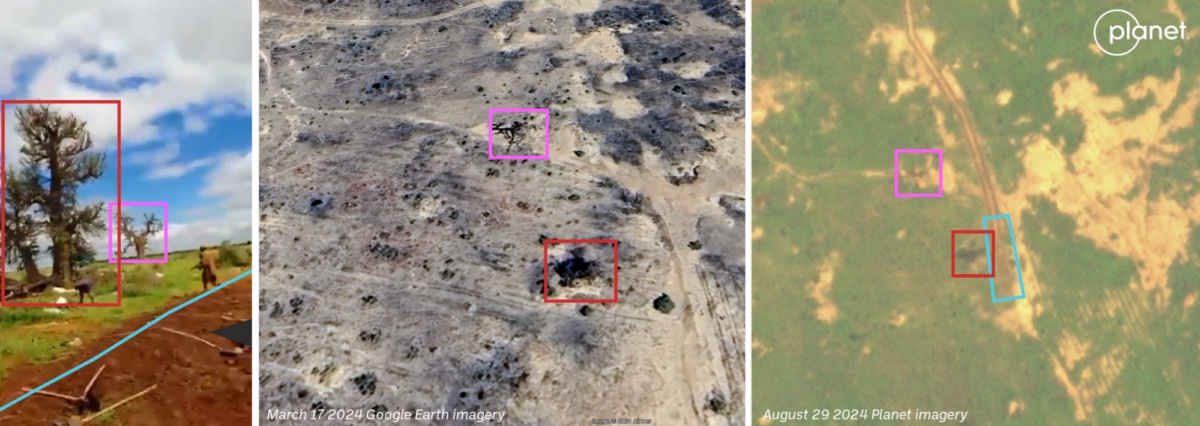
A telephone pole can also briefly be seen in the footage of the aftermath. We used this additional visual clue to confirm the geolocation.

Another video shows the militants moving around a trench line towards Barsalogho, accompanied by the sound of gunfire. More than 110 motorcycles are visible in this video, which Bellingcat geolocated to the same trench just north of the road to Nyanga.
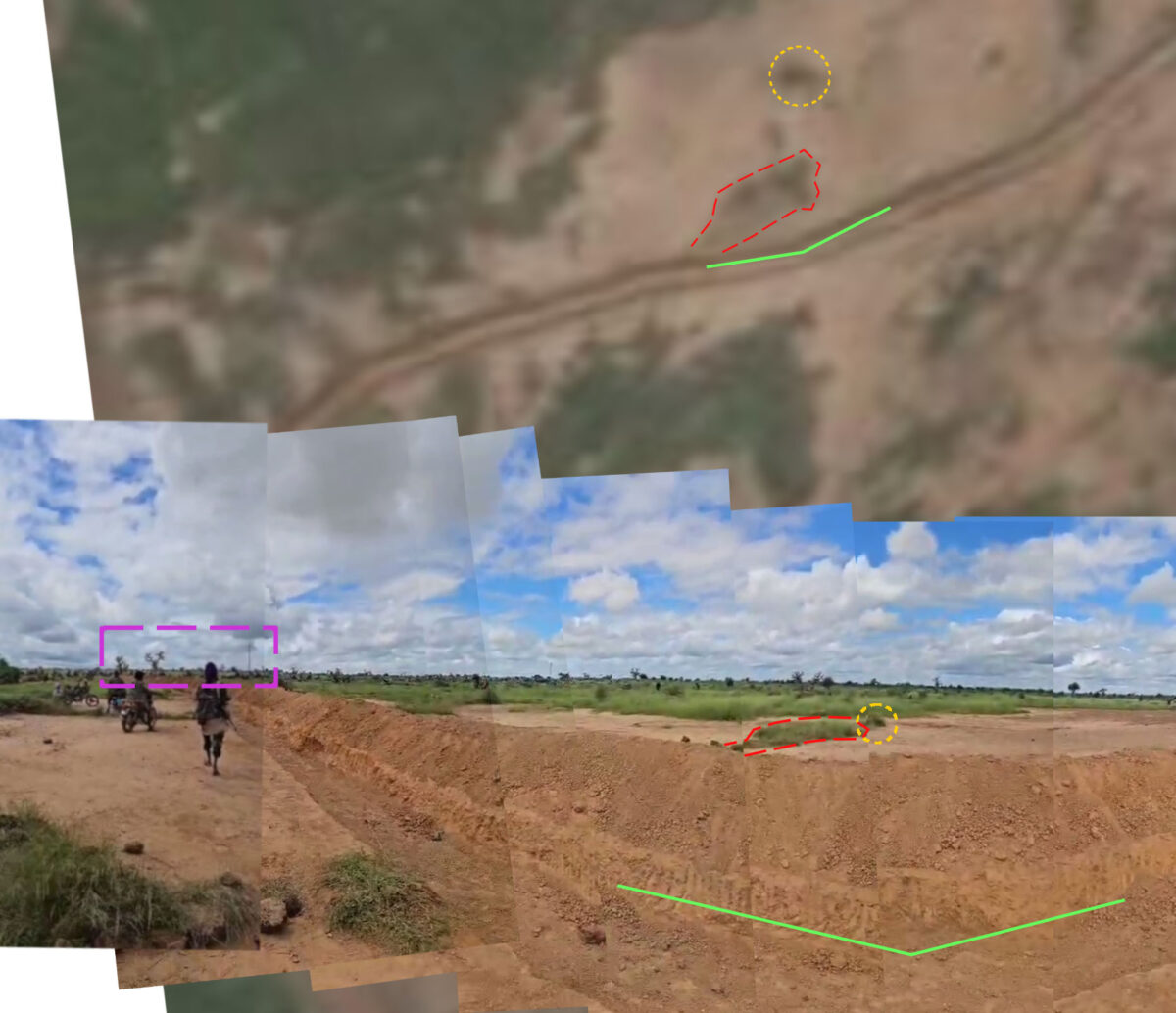
According to reports, the attackers arrived at the trenches around 10 a.m., which is supported by the direction of the shadows in the videos. However, an exact time could not be determined.
Widely Circulated Video Actually Filmed in Neighbouring Mali
In addition to footage posted by JNIM, Bellingcat found that another video circulated online and cited in media reports, allegedly showing the aftermath of the August 24 attack, was actually filmed in neighbouring Mali in a separate incident.
By extracting keyframes from the video using ffmpeg and reverse image searching one of the keyframes, we established that the video was posted online prior to the Barsalogho attack.
X user @WarWatchs posted on August 18, 2024 that the video showed the aftermath of a different JNIM attack in Melgué, Mali, a town near the Mauritanian border, hundreds of kilometres from Barsalogho.
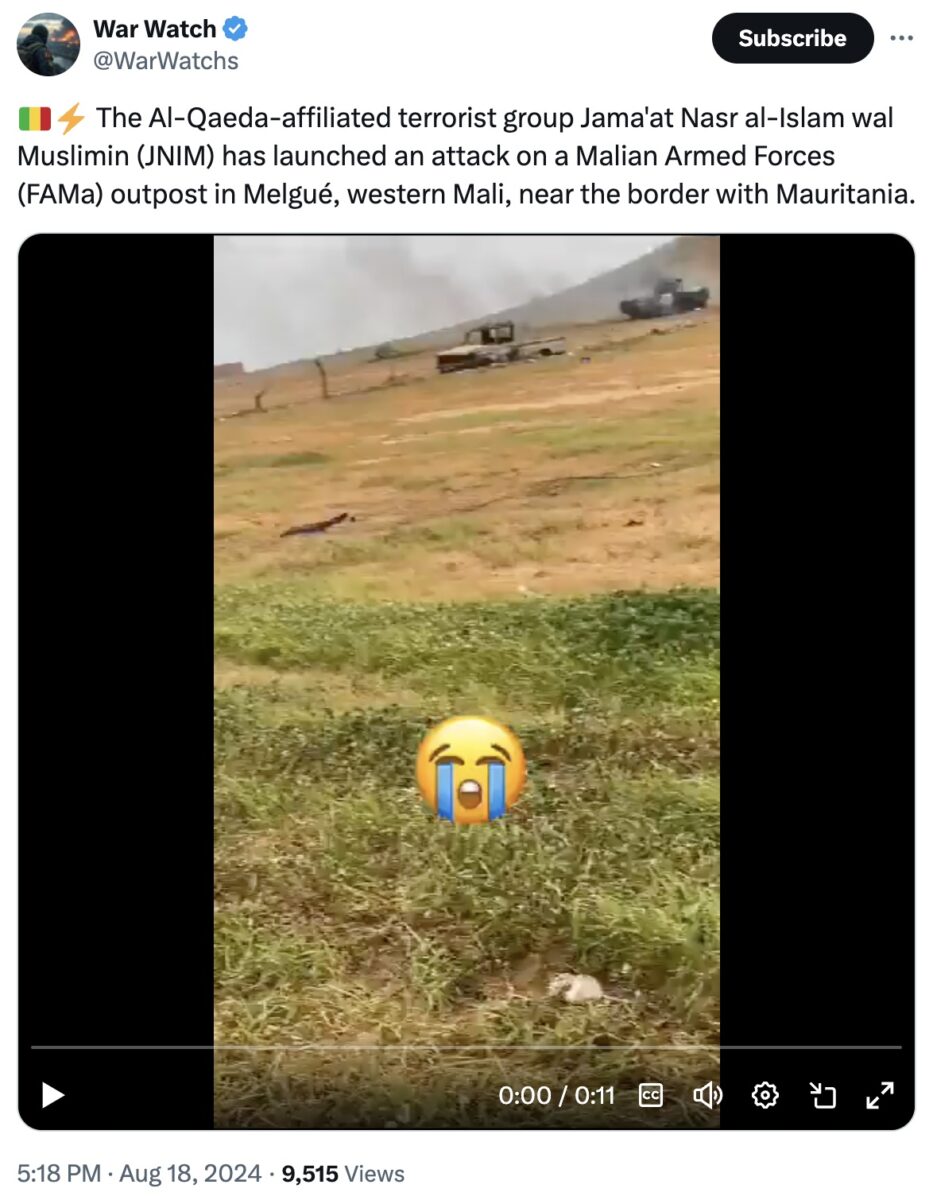
A Google search with the keywords JNIM and Melgué led us to an older post by France 24 journalist and Sahel expert, Wassim Nasr, containing a video filmed at the same location but from a different angle.
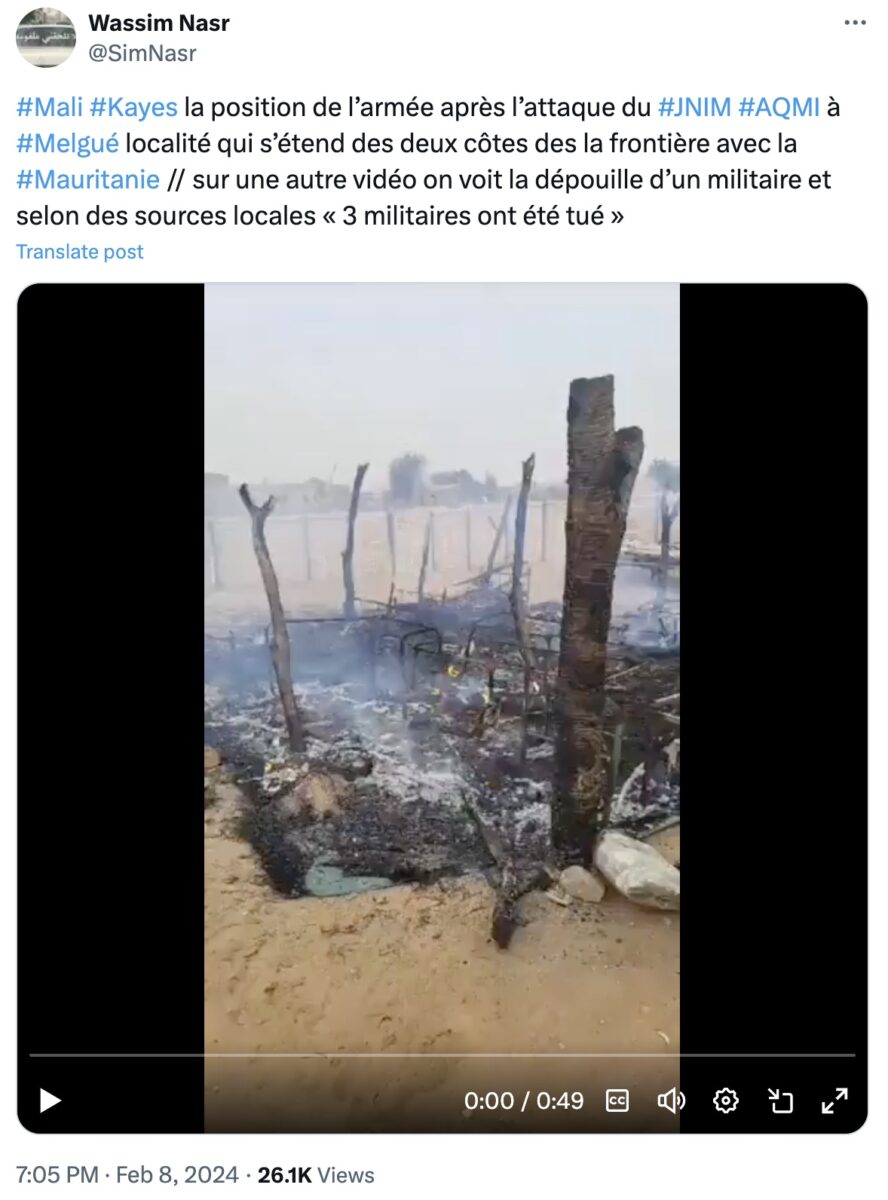
Using these two videos, we were able to confirm the video circulated in relation to Barsalogho was in fact from Melgué. Importantly, Wassim Nasr’s video shows several matching buildings and the same hill, which helped us match it to the other video.
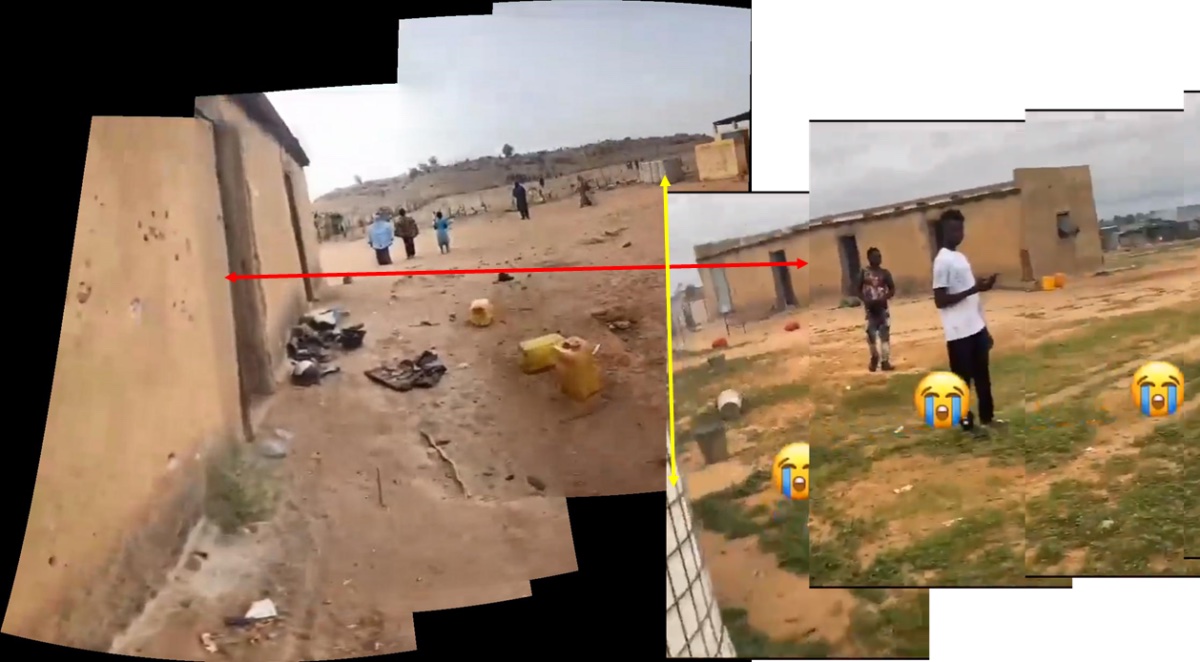
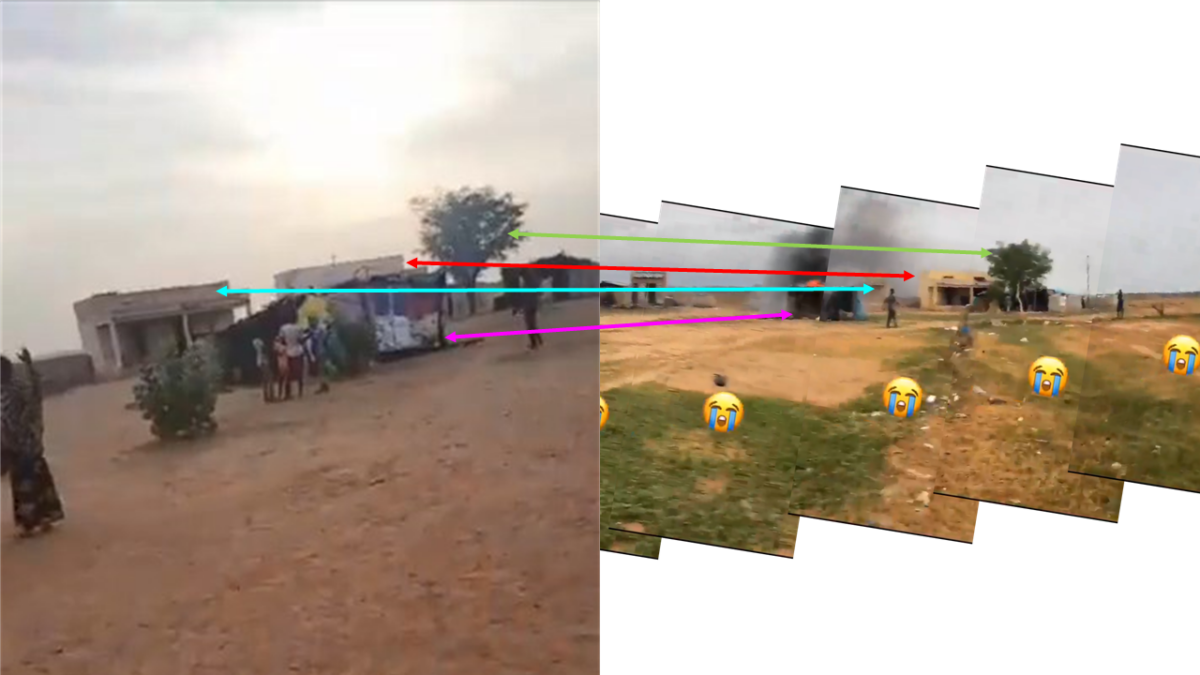
A Russian-language Telegram channel, @Departamente, which focuses on the conflict in Sahelian countries, also shared videos filmed by JNIM fighters at the site of the attack.
Bellingcat was able to match the location in the videos to 14.89513, -11.78243.
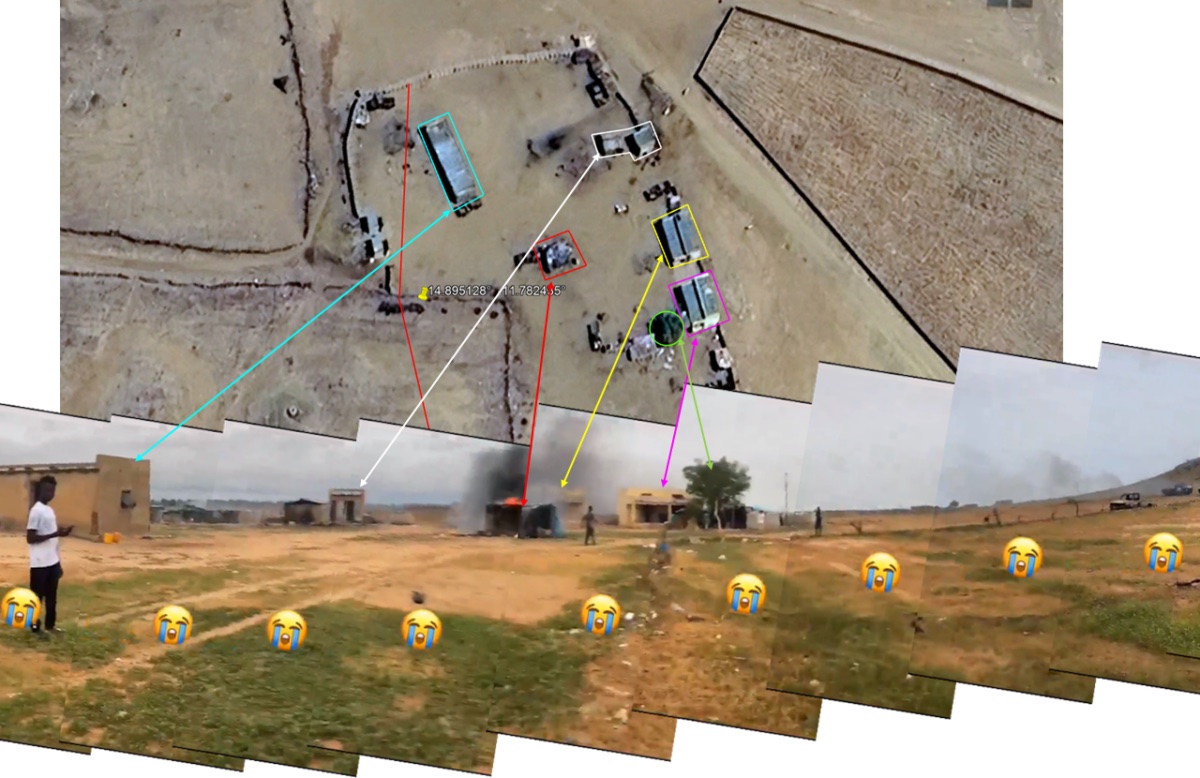
Through its media wing, Az-Zallaqa, JNIM confirmed that they had attacked military positions in Melgué, and the vehicles in the Az-Zallaqa pictures correspond with the vehicles in videos that were shared by @Departamente on Telegram.
JNIM’s Pattern of Attacks
An official death toll has not yet been confirmed, with figures varying widely. The UN reported around 200 dead and 140 wounded, while CJB say closer to 400 were killed.
Four days after the attack JNIM released a statement claiming they killed 300 people at the trenches near Barsalogho and that all the people killed were militias and affiliated with the Burnabè army.
Other than the weapons wielded by the JNIM militants, Bellingcat did not observe any other firearms in the videos and no weapons can be seen near the bodies in the trenches. The people counted in these videos appeared to have been unarmed.
“This attack is certainly one of the worst carried out by the JNIM but falls into a pattern that we have previously documented,” Ilaria Allegrozzi, Senior Sahel Researcher at Human Rights Watch, told Bellingcat.
She said the JNIM had besieged dozens of towns across the country, blocking food and humanitarian aid.
“[JNIM] has constantly targeted civilians and is responsible for serious abuses against them, including mass killings, destruction and looting of civilian property, kidnapping and sexual assaults.”
Burkina Faso has been engaged in a non-international armed conflict against Islamist militia since 2016, and Human Rights Watch have documented multiple massacres carried out by both the military and militant groups against unarmed individuals.
Amnesty International reported last year that more than dozens of locations across the country were under siege from armed groups.
The latest massacre occurs at a strategic location in the country, less than 150 km from the capital.
Bellingcat previously reported on a JNIM attack on a humanitarian convoy heading to the besieged town of Djibo in September 2022. Days after the attack amid a deteriorating security situation, Burkinabè military commander Ibrahim Traoré staged a coup and took control of the country.
Traoré came to power pledging to improve the unstable security situation, but so far has failed to deliver on the promise. Traoré has kept a low profile amid a series of attacks in the country and is still yet to speak about the Barsalogho massacre.
Bellingcat is a non-profit and the ability to carry out our work is dependent on the kind support of individual donors. If you would like to support our work, you can do so here. You can also subscribe to our Patreon channel here. Subscribe to our Newsletter and follow us on X here and Mastodon here.
